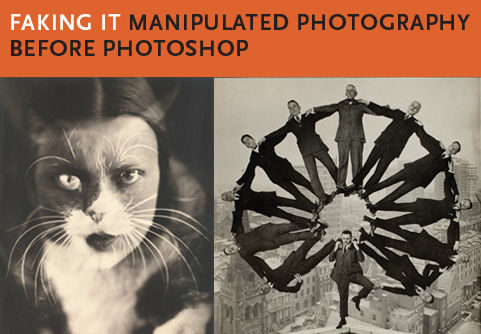Photographic editing, retouching and restoration with Photoshop is something we
associate with modern high end
fashion photography and advertising
in the late 20th century. I was fascinated to read recently that
photographic retouching is not a new process. As early as the 1850s as a
matter of general practice photographers not only hid a subjects defects by skilful posing and lighting but also retouched or “beautified” photos removing
blemishes and adding points of beauty because “the camera
represented the countenance too truthfully”. Beautification involved the “manual
interference with the negative or print and the photographer then leaves his
proper domain of drawing with light and becomes that curious hybrid, the
painter- photographer.”
“… Indeed, the case with which anyone with a little skill
could add to or take away from parts of the picture, presented a dangerous
temptation to photographers to give way to the sitter’s desire for a flattering
portrait, or to obtain ‘artistic’ effects. As the practice was so widespread many photographic societies refused to
accept coloured photos or required the photographer to also show the original
negative next to the print. The Colourist,
a photographic publication of the time instructed that the photographer
’may correct with
his brush defects which, if allowed to remain, spoil any picture. For instance, where a head is so irregular in
form as to become unsightly, soften those features which are the most
strikingly deformed, and reduce the head to greater semblance of beauty. Try to discover what good points there are –
for all heads have some good points – and give these their full value. In his aspirations towards the Victorian
ideal the photographer would try to make his sitter’s features conform to some such description as the following
(with what result, may be left to the imagination):
(For women). A handsome face is of an oval shape, both
front view and in profile/ The nose
slightly prominent in the centre, with small, well-rounded end, fine nostrils;
small, full, projecting lips, the upper one short and curved upwards in the
centre, the lower one slightly hanging down in the centre, both turned up
a little at the corners, and receding inside; chin round and small; very small,
low cheekbones, not perceptibly rising above the general rotundity. Eyes large, inclined upward at the inner
angles, downwards at outer angles; upper eyelids long, sloping beyond the white
of the eye towards the temples. Eyebrows
arched, forehead round, smooth and small; hair rather profuse. Of all things, do not draw the hair over the
forehead if well formed, but rather up and away. See the Venus de Medici, and for comparison
see also Canova’s Venus, in which latter the hair is too broad.
(For men) An intellectual head
has the forehead and chin projecting, the high facial angle presenting nearly a
straight line; bottom lip projecting a little; eyebrows rather near together
and low (raised eyebrows indicate weakness).
Broad forehead, overhanging eyelids, sometimes cutting across the iris
to the pupil.
As to the most
important part of the woman’s figure, the waist, one instruction interpreted
photography rather generously :’the
retoucher may slice off, or curve the lady’s waist after his own idea of shape
and form and size’.”
Extract from Helmut Gernsheim: The Rise of Photography
1850 – 1880.





